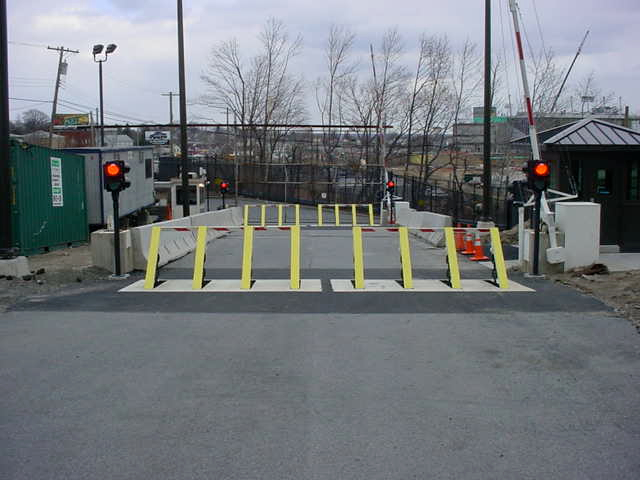Vehicle obstacles, also known as crash limitations, are physical security units designed to regulate or block vehicular entry to a selected space. They are widely utilized in numerous environments to boost safety, prevent unauthorized automobile entry, and defend individuals and property from potential threats. Here's every little thing you should learn about car limitations:

Types of Vehicle Barriers:
Crash Beams: Crash beams are horizontal barriers put in along roads or highways to stop automobiles from leaving the roadway and coming into harmful areas.
Wedge Barriers: Wedge barriers are raised from the bottom to block automobiles from getting into a specific space. They are particularly effective towards hostile automobile attacks.
Bollards: Bollards are sturdy, vertical posts put in within the floor to regulate vehicular or pedestrian traffic. They are available in various varieties, including fastened, removable, and retractable bollards.
Gates and Rising Arm Barriers: These obstacles management access points and are generally used in parking heaps, residential areas, and secure services. Rising arm limitations rise vertically to allow or block access.
Key Functions and Features:
Hostile Vehicle Mitigation (HVM): Vehicle barriers, especially crash-rated barriers, provide safety against vehicle-ramming assaults, which have become a significant safety concern.
official statement : Vehicle barriers help in managing and limiting vehicular entry to approved personnel solely, enhancing security in sensitive areas.
Quick Deployment: Many vehicle barriers are designed for speedy deployment, ensuring swift response in emergency situations or security breaches.
Integration: Vehicle limitations can be integrated with other safety methods like surveillance cameras, access control, and alarms for a complete security answer.
Customization: Vehicle barriers may be personalized when it comes to dimension, energy, and management mechanisms to suit particular security necessities.
Considerations When Choosing Vehicle Barriers:
Security Level: Determine the required degree of security primarily based on the potential threats faced by the power. Some areas may want crash-rated barriers, whereas others might require normal access management limitations.
Site-specific Factors: Consider the space obtainable, floor conditions, and potential conflicts with underground utilities when choosing and putting in car obstacles.
Integration: Ensure compatibility with present security methods and the power to combine with different parts of the safety infrastructure.
Regulatory Compliance: Adhere to native laws and laws governing the installation and use of auto limitations, acquiring essential permits and approvals.
Maintenance: Regular upkeep is essential for the efficient operation of vehicle barriers. Choose obstacles which are durable and require minimal maintenance.
Applications:
Critical Infrastructure: Vehicle barriers are used to protect critical infrastructure similar to power vegetation, authorities buildings, and airports.
Commercial and Residential Areas: They are deployed in parking tons, residential communities, and business institutions to control automobile access and improve security.
Event Security: Vehicle obstacles are used during events, festivals, or rallies to create secure perimeters and forestall unauthorized vehicular entry.
Public Safety: Vehicle obstacles are utilized in pedestrian zones and public spaces to forestall unintended collisions and defend pedestrians.
In summary, automobile obstacles are important safety gadgets used to handle vehicular entry, improve safety, and protect towards varied threats. Choosing the best type of auto barrier entails cautious consideration of safety wants, site-specific elements, integration capabilities, and regulatory compliance..
